New Zealand hit by aftershocks after severe earthquake
- Published
BBC News Sting
Strong aftershocks have rocked New Zealand following a 7.8-magnitude earthquake that killed two people.
The South Island has seen hundreds of tremors, including a 6.3-magnitude quake, after the initial one struck after midnight on Monday.
The epicentre is northeast of Christchurch, near the town of Kaikoura which has been cut off by landslides.
There are believed to be up to 1,000 tourists stranded in the town.
Military helicopters and a navy ship are being sent to evacuate them and others from Kaikoura.
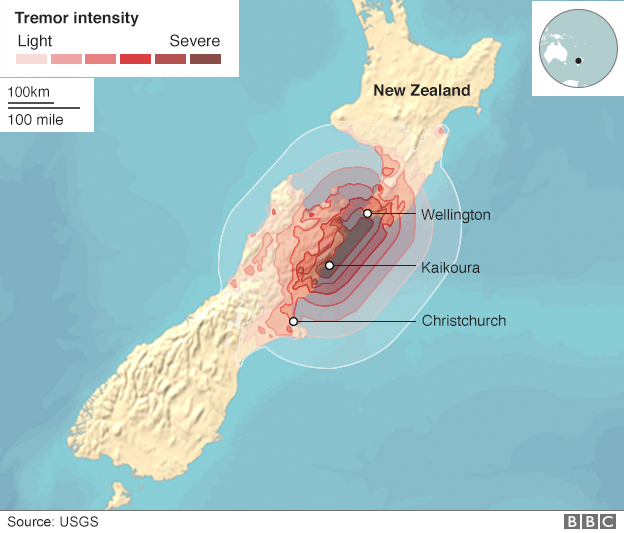
The earthquake caused damage in Kaikoura and Culverden
Aerial footage of landslides caused by New Zealand quake
Residents near the epicentre begin cleaning up after the earthquake and several aftershocks caused severe damage
The aftershocks have left some communities without power and water, although authorities are slowly restoring supplies.
Prime Minister John Key described the scene in Kaikoura as "utter devastation" while flying over the area. He said the damage bill will likely be in the "billions of dollars", according to a statement seen by Reuters.
GeoNet,, external a government-funded project monitoring earthquakes, said the first earthquake was actually two related tremors, and that aftershocks would continue over the next few months.

New Zealanders pull together - Hywel Griffith, BBC News, Christchurch

Residents in Wellington evacuated to one of the city's parks after the first earthquake struck after midnight
As the aftershocks keep coming, Kiwis up and down the country are sharing the same emotions.
Exhaustion from a sleepless night, concern for those still cut off from communication, and sadness for the two people who lost their lives. But there is also real relief.
This earthquake was greater in magnitude than 2011's Christchurch tremor, but it didn't bring the same level of devastation.
The cost of rebuilding will be huge - major parts of New Zealand's infrastructure have been twisted and snapped out of shape.
But as is often the case when disaster strikes, New Zealand's people have pulled together, checked on their neighbours and offered each other a safe haven.

Authorities spent all of Monday rescuing and evacuating residents along the east coast.
New Zealand media reported that a 100-year-old woman and her daughter-in-law were pulled out alive, external from their home in Kaikoura, after the house collapsed in the first earthquake. The younger woman's husband died.
Radio New Zealand presenter Vicki McKay stays calm as the earthquake hits while she is on air
A woman also died at Mount Lyford, external, southwest of Kaikoura, though there are reports she may have died from an existing medical condition.
Waves of around 2m (6.6ft) hit the coast shortly after the first earthquake. Authorities have since lifted a tsunami alert, but are still warning people to stay away from the shoreline.
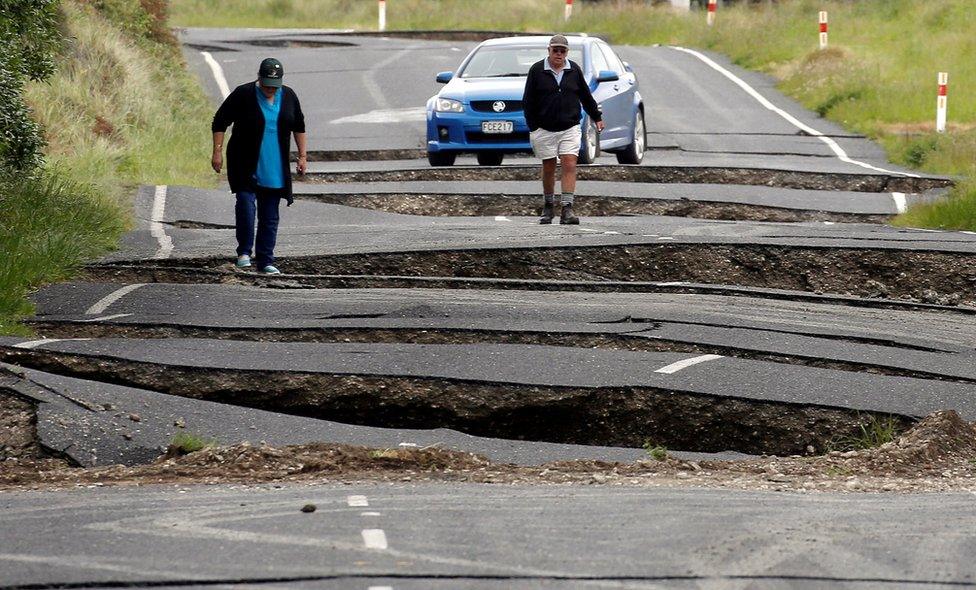
The first earthquake warped and cracked a highway on the South Island
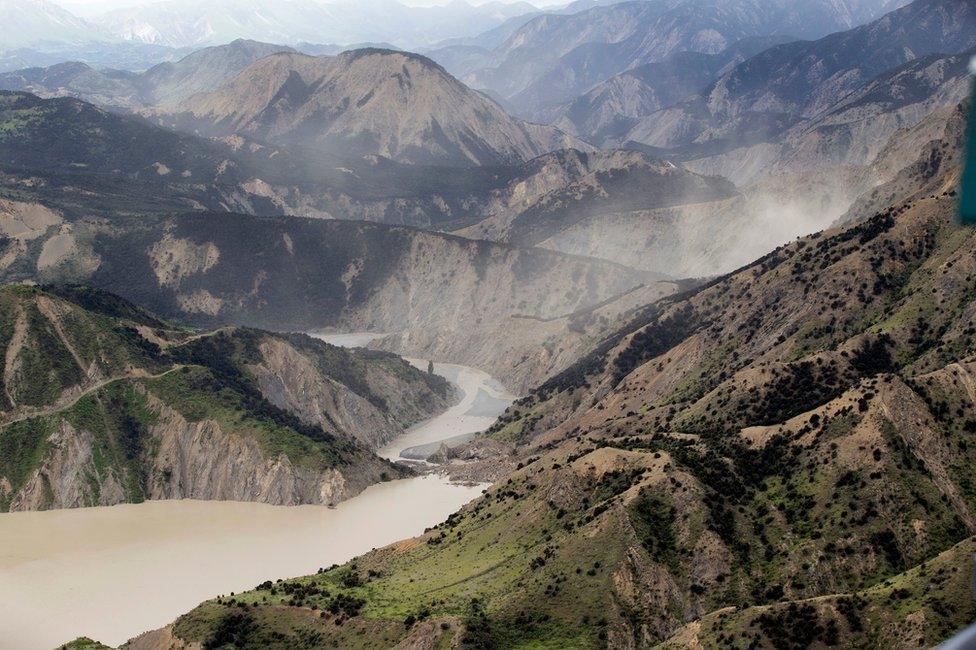
A landslide created a natural dam on the Clarence River, causing it to burst its banks
Residents in Christchurch and surrounding towns have rushed to stock up on basic supplies. Some schools in the affected area have remained closed on Monday.
Kaikoura, a popular tourist destination with a population of about 3,600, saw its main road blocked by landslides, with telecommunications, water and power supplies cut off.
The operation to rescue those that remain stuck there could take several days, with each NH90 helicopter being deployed only able to carry 18 people at a time, Air Commodore Darryn Webb told the Associated Press news agency.
Video footage shot from a helicopter showed three cows left stranded on a tiny island of grass after the surrounding earth collapsed from landslides near Kaikoura.
Three cows were left stranded after the quake
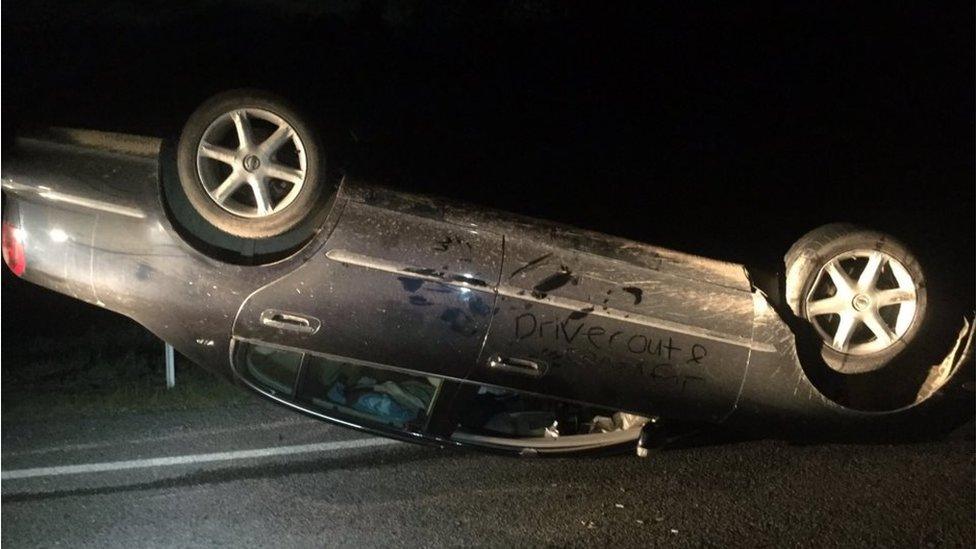
New Zealand resident Henry McMullan tweeted this picture of an overturned car on State Highway One, with the words 'Driver out and safe' written on it
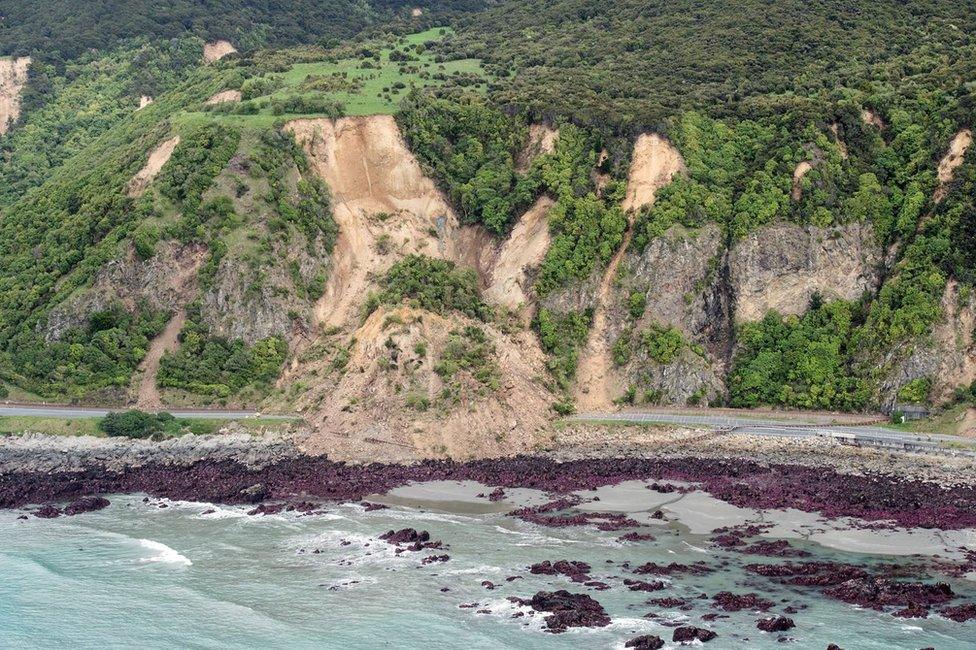
The New Zealand Defence Force released this photo showing a huge landslide on State Highway One near Kaikoura
Mr Key, the prime minister, told reporters that he believed the number of fatalities would remain low, while civil defence minister Gerry Brownlee said damage to infrastructure appeared to be the biggest problem.
One expert told TVNZ that the low number of fatalities may have been due to the fact that the first quake struck in the middle of the night.
"People were safe in their homes, homes might get damaged but they're safer for the people inside," said Ken Elwood from the University of Auckland.
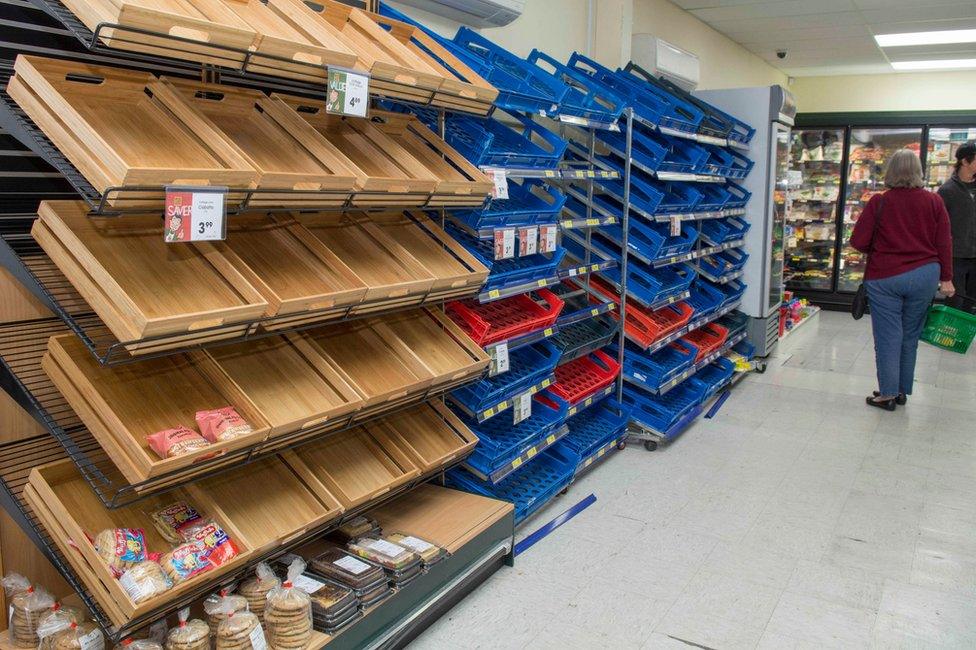
Christchurch residents have rushed to stock up on supplies like bread and water in the aftermath of the quake
The quake also caused damage in Wellington on the North Island, where the city's central business district (CBD) remained quiet on Monday as workers cleared debris and checked buildings.
Resident Adam Roland told the BBC: "The CBD's been closed off so most people are either working from home or not working today."

The tremors were felt in Wellington as well, where cracks emerged on roads

The quake dislodged logs at Wellington's port
GeoNet said the first quake was the strongest to have hit New Zealand since a 7.8-magnitude earthquake in 2009 in a remote area of the South Island.
The US Geological Survey measured it at magnitude 7.8, while GeoNet put it at 7.5.
New Zealand lies on the Ring of Fire, the fault line that circles virtually the entire Pacific Rim bringing frequent quakes and volcanic eruptions.
Christchurch is still recovering from a 2011 earthquake that killed 185 people and destroyed the city centre.
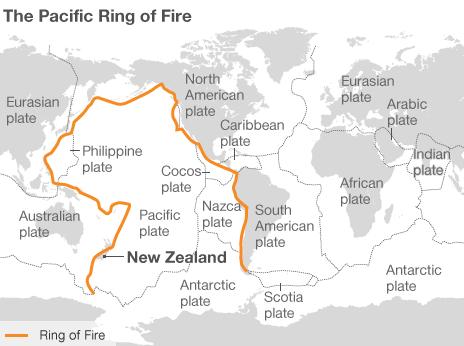
- Published14 November 2016

- Published13 November 2016
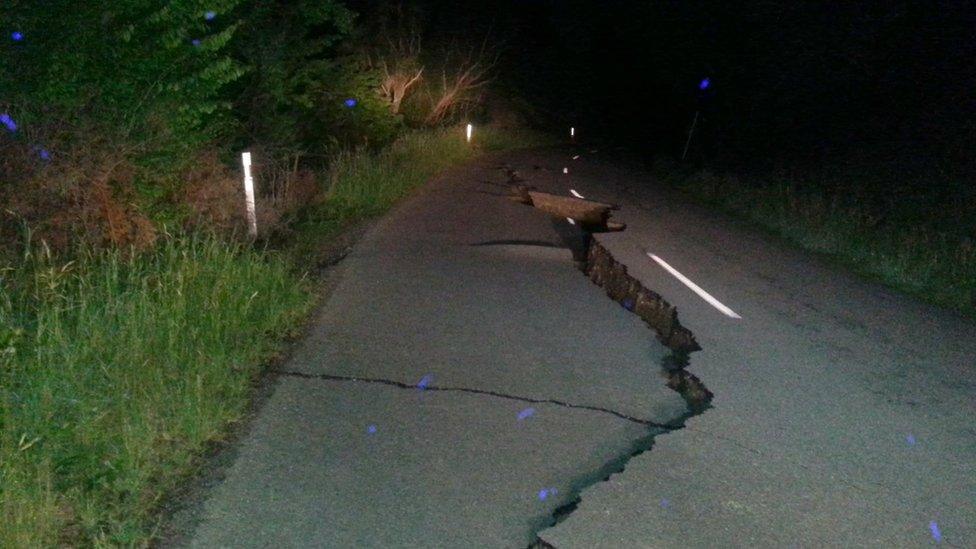
- Published22 June 2022
